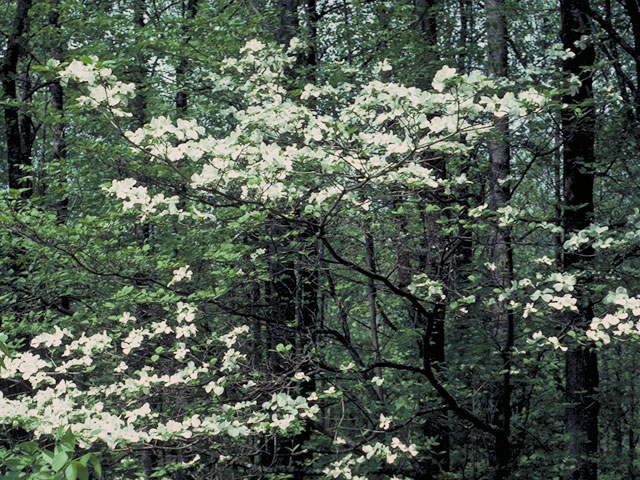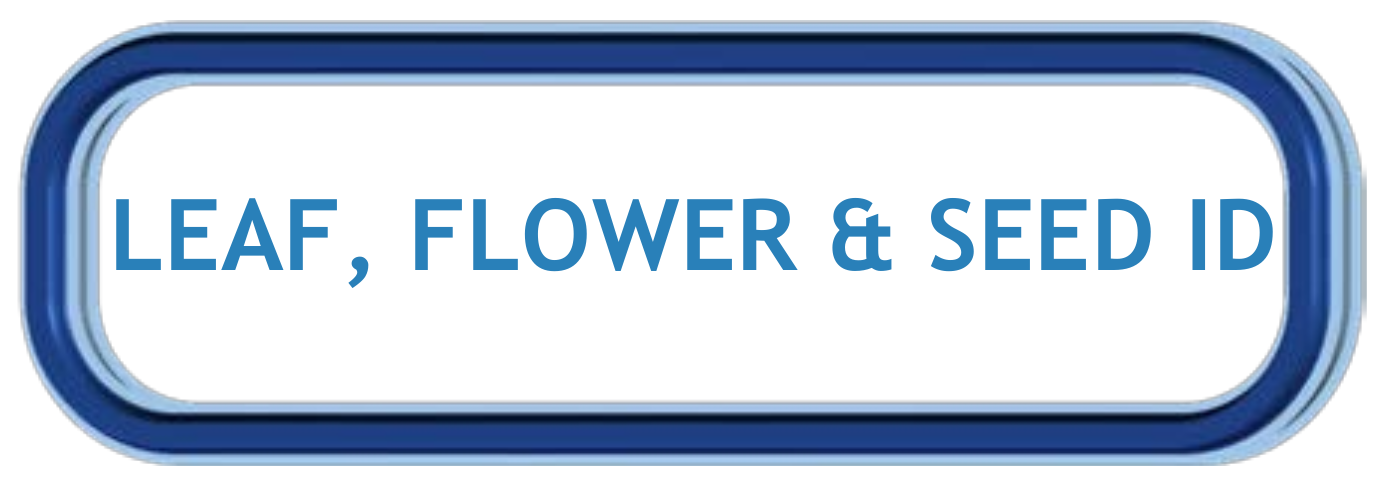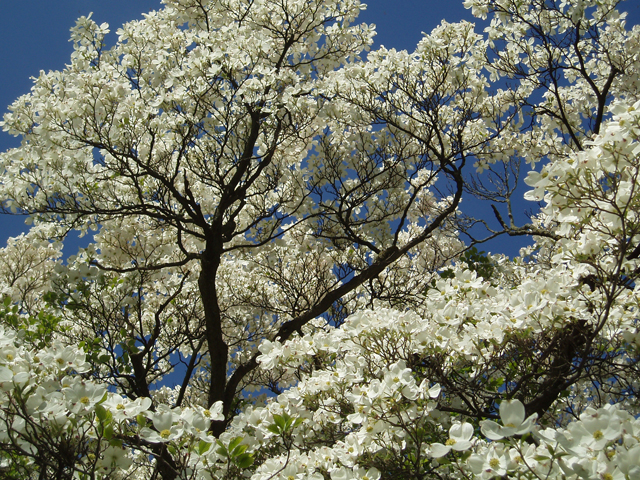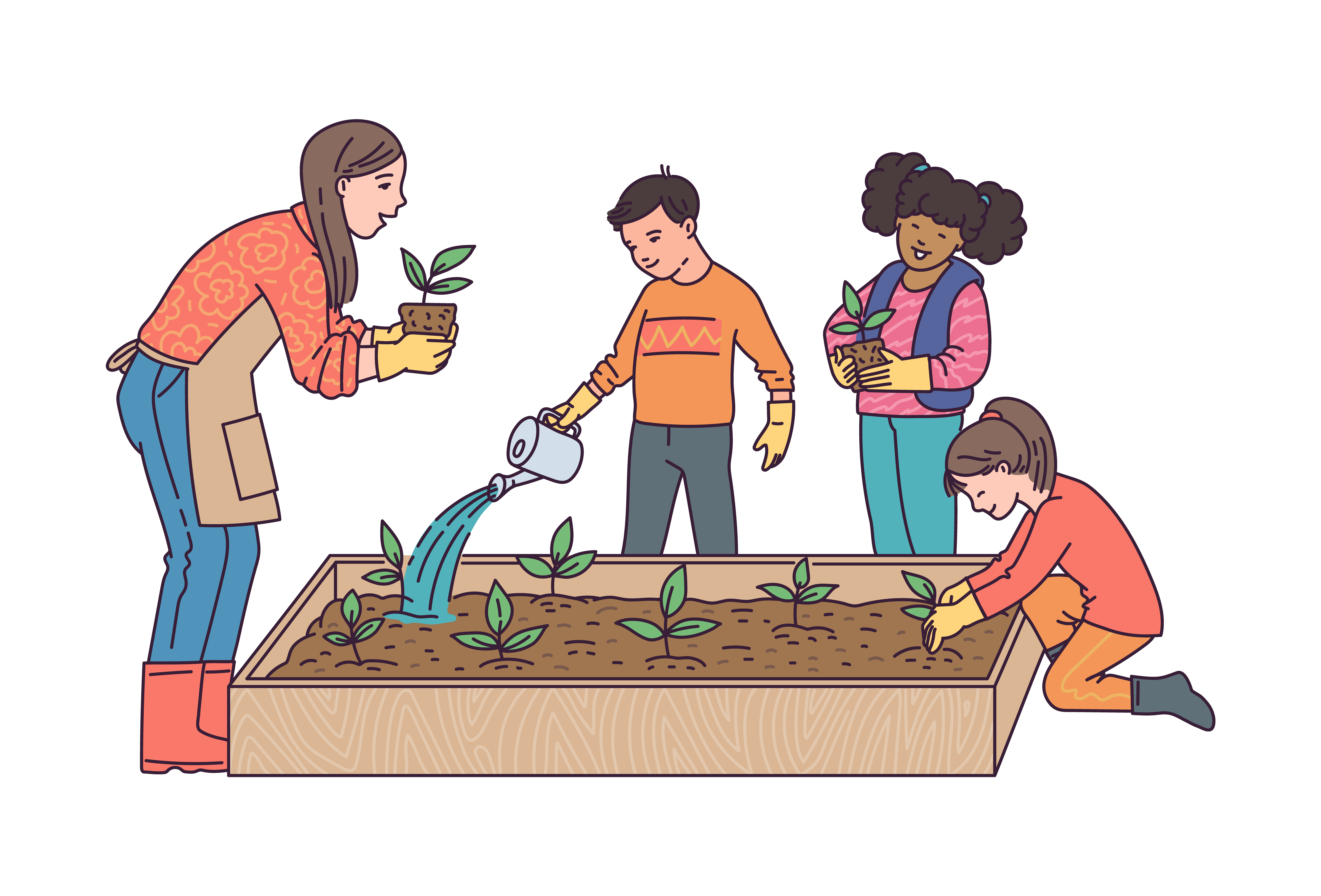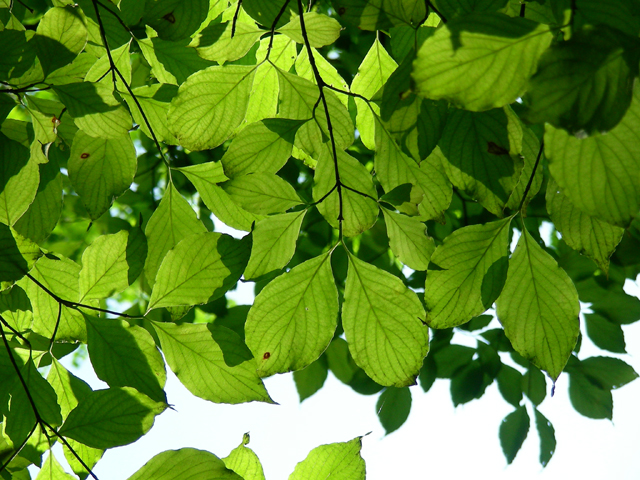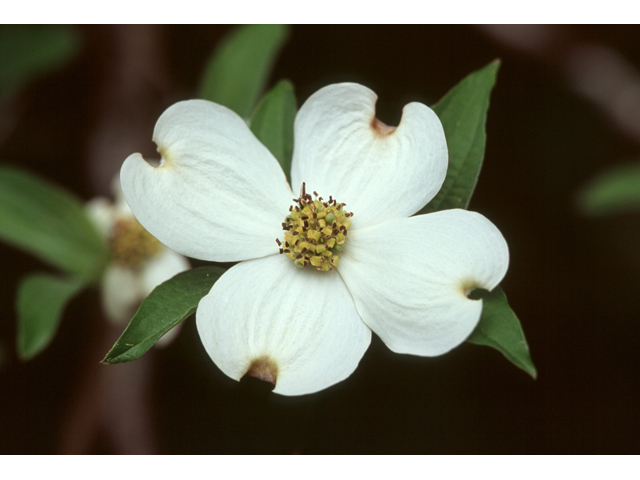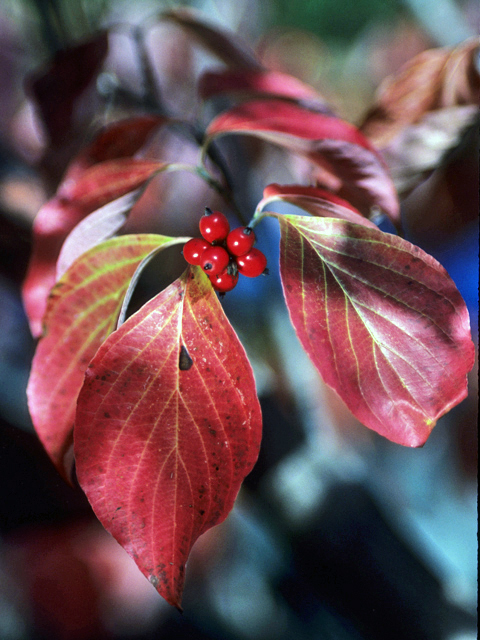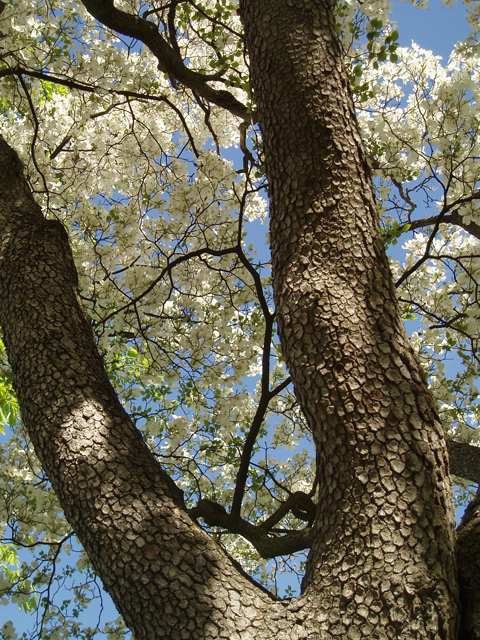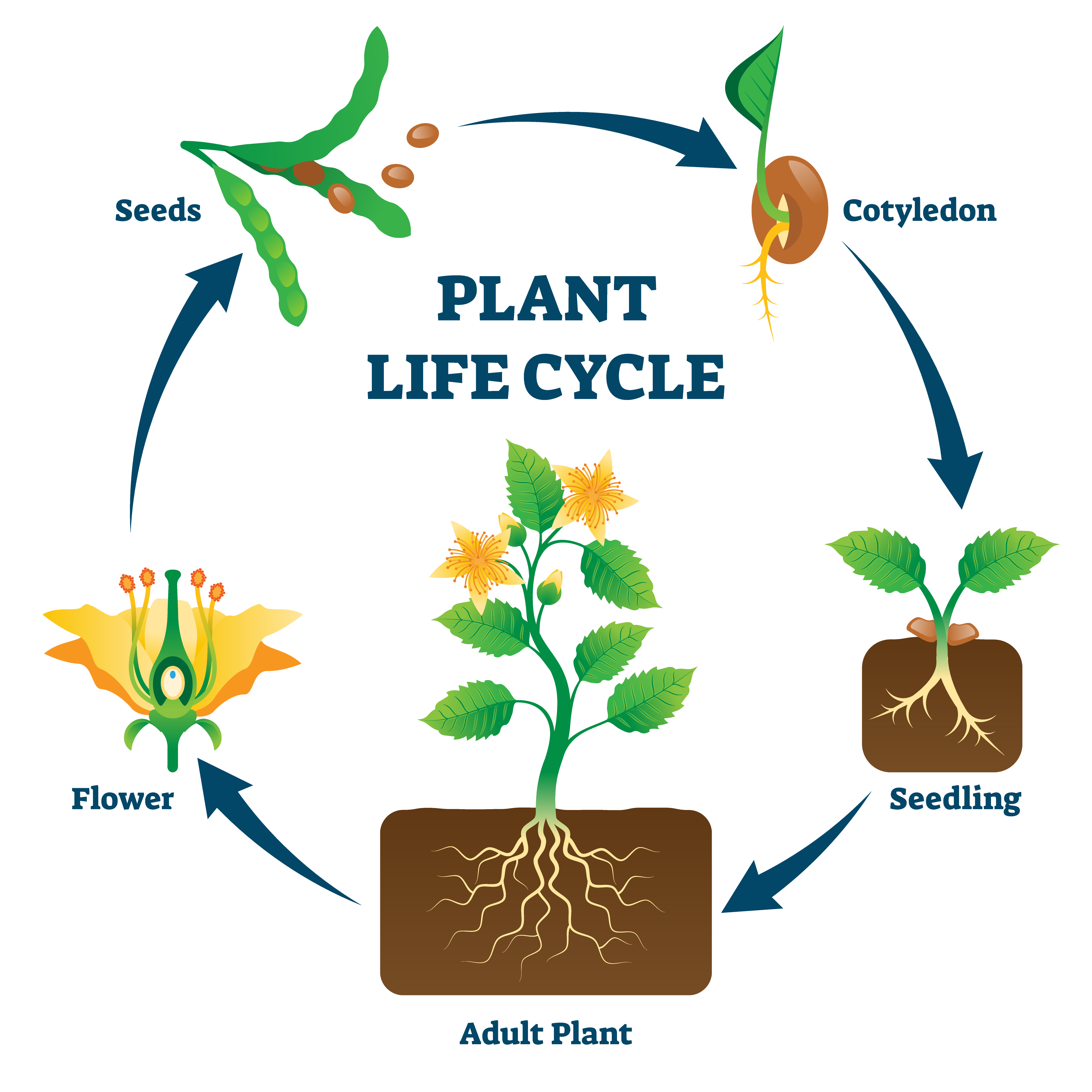Dig into Plants: Flowering Dogwood
| Flowering Dogwood Other Common Names: Virginia Dogwood, Florida Dogwood, White Cornel, Arrowwood, False Box Scientific Name: Cornus florida Native to Alabama: Yes |
|
Lady Bird Johnson Wildflower Center W.D. and Dolphia Bransford Click on image to enlarge it |
Learn more about...
| Ecological Benefits | |||||
| This plant provides food for: | |||||
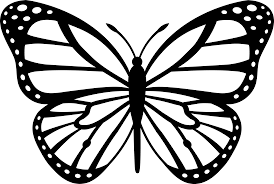 |
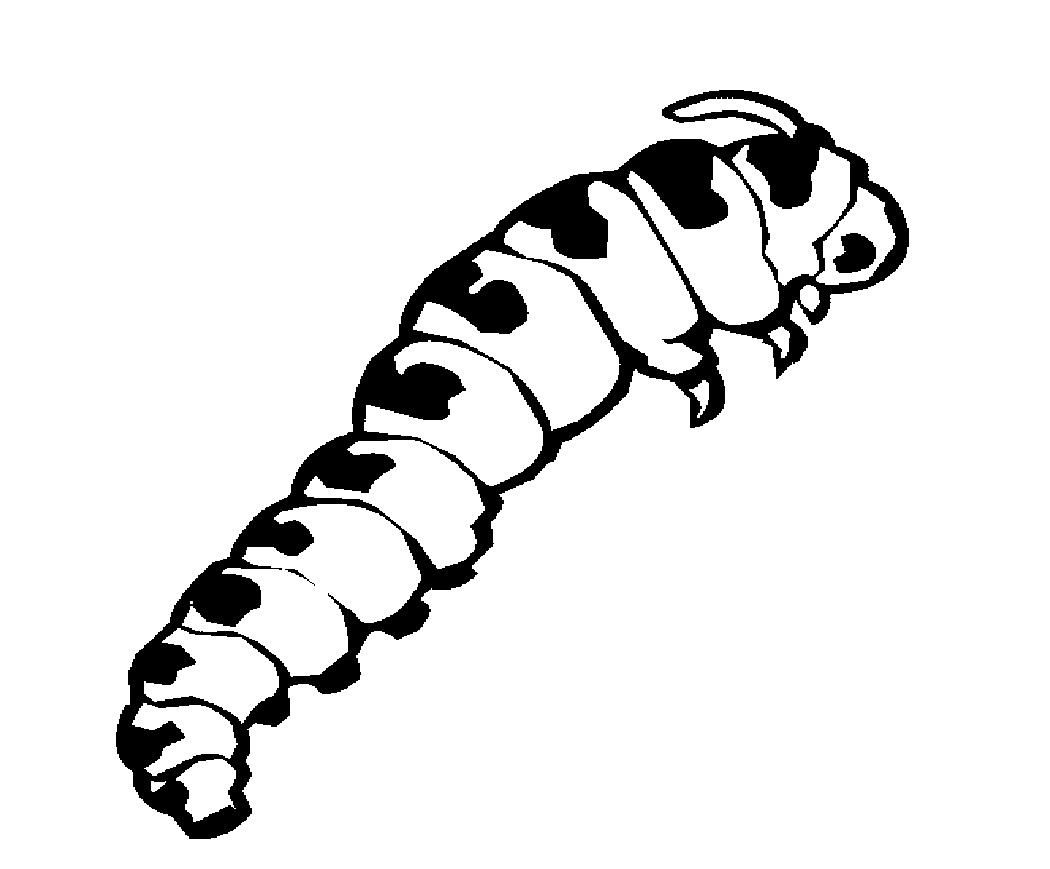 |
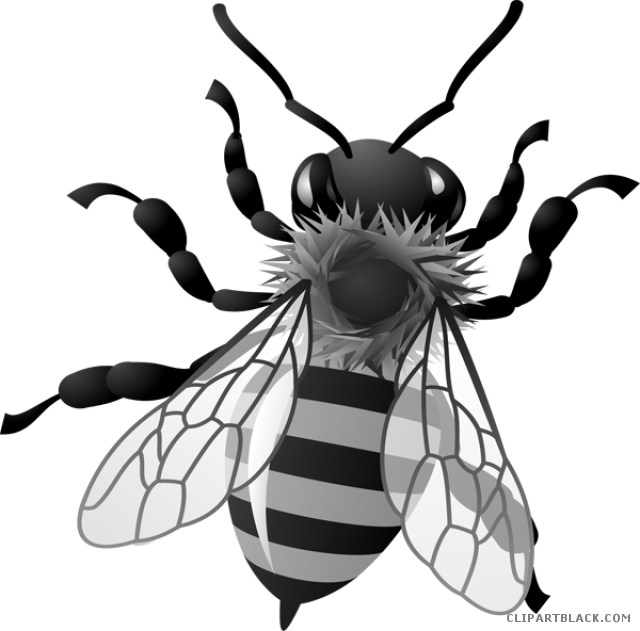 |
 |
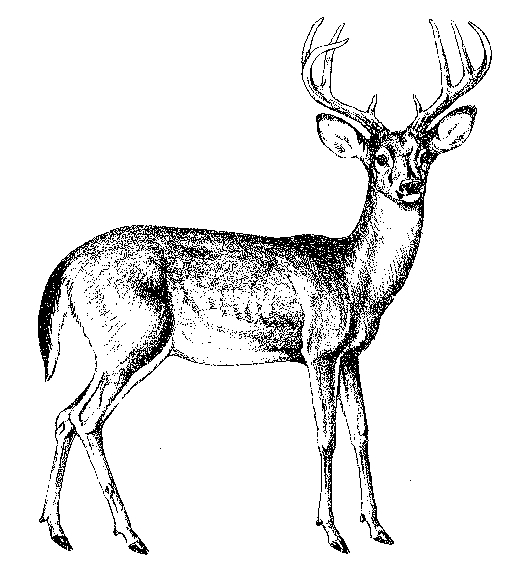 |
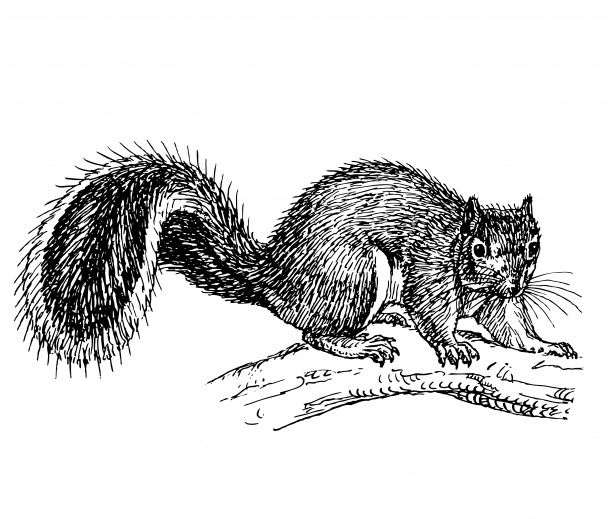 |
| Butterflies | Caterpillars | Native Bees | Other Birds | Deer | Small Mammals |
| Spring Azure, Summer Azure | |||||
| Other Plants Found in Alabama with Similar Ecological Benefits: |
|||||||
| Alternate-Leaved Dogwood (Cornus alternifolia) |
Silky Dogwood (Cornus amomum) |
||||||
|
|
|
|
 |
|
|
|
 |
| Rough-Leaved Dogwood (Cornus drummondii) |
Southern Swamp Dogwood (Cornus foemina) |
||||||
|
|
|
||||||
| Habitat Requirements | |||
| This plant prefers: | |||
|
Full Sun
(6+ hours of sun per day) (2-6 hours of sun per day) |
 Average Watering |
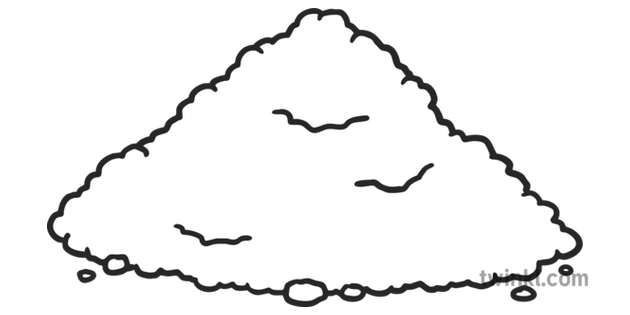 Well-drained, Sandy, Loamy, or Acidic soil Well-drained, Sandy, Loamy, or Acidic soil |
|
| Leaf, Flower & Seed Identification | ||||
| LEAF DESCRIPTION |
Lady Bird Johnson Wildflower Center
Eric Beckers Click on image to enlarge it |
|||
| Leaf Characteristics Chart (PDF) | ||||
| Shape: Ovate |
Margin: Entire/Smooth |
Arrangement: Opposite |
Form: Simple |
|
|
|
|
|
|
|
| Description: | ||||
| Leaves are 3-6 inches long and 3-6 inches wide; dark green on the upper side and more pale underneath; veins bend upward toward the tip; turn bright reddish purple in the fall | ||||
| FLOWER DESCRIPTION |
Lady Bird Johnson Wildflower Center
Carolyn Fannon Click on image to enlarge it |
||||||
| Flower Shapes Chart (JPG) | |||||||
| Color: Appear white or pink with yellowish green cluster in the center |
Shape: Cross |
Bloom Months: Mar - May |
|||||
| Description: | |||||||
| 3-4 inches across; Yellowish green flowers are clusterd in the center and have four white or pink bracts below | |||||||
| SEED DESCRIPTION |
Lady Bird Johnson Wildflower Center
Sally and Andy Wasowski Click on image to enlarge it |
||
| Type: Fruit - Berry |
Description: Grow in clusters of 3 or 4 berries that are glossy bright red, oval shaped, and 1/2 inches in diameter |
Months in Seed: Fall |
|
| Plant spreads by: | |||
| Seeds In the fall, when the fruit is bright red and ripe, birds and other wildlife eat the fruits. After going through the digestion process, the seeds are able to germinate in the new location. |
|||
| BARK DESCRIPTION |
Lady Bird Johnson Wildflower Center
Julie Makin Click on image to enlarge it |
|
| Color: Dark brown, dark gray brown |
Texture: blocky, scaly texture for mature trees |
|
| Description: | ||
| When tree is young, bark is smooth; as tree matures, the bark develops a blocky, scaly texture | ||
ADDITIONAL RESOURCES FOR TEACHERS
| Quick Fact Sheet (Condensed Species Info) |
Plant ID Sign: Ready as-is PDF |
Plant ID Sign: Editable Word Doc |
QR Code (Links to this Webpage) |
INFORMATION SOURCES FOR THIS PLANT
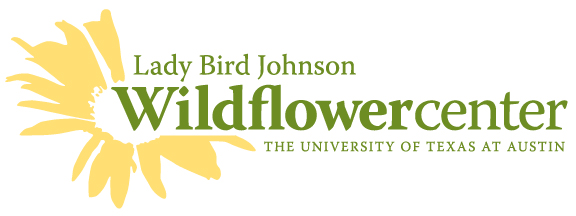 |
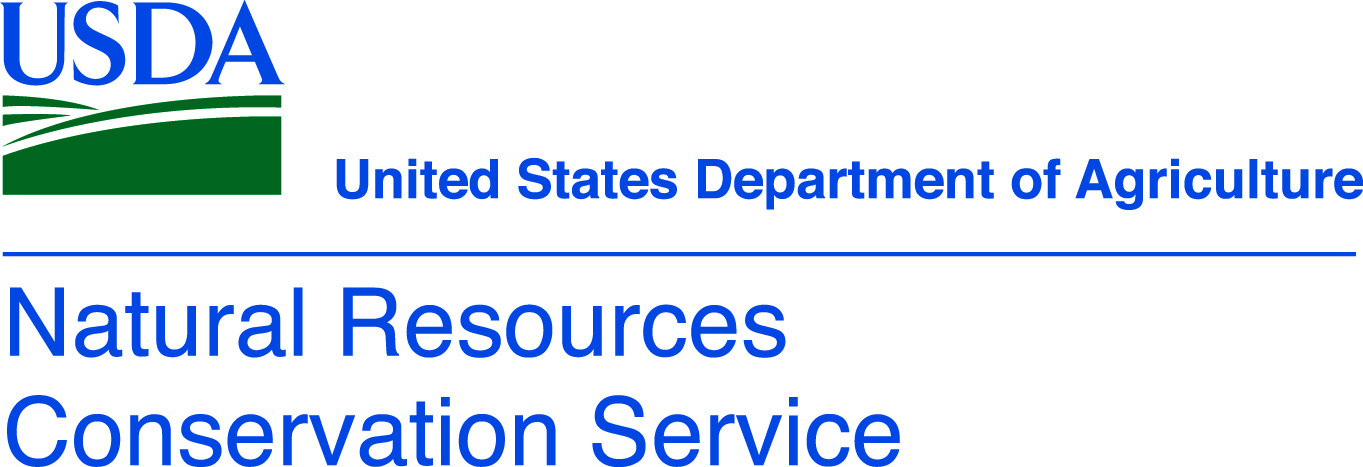 |
|
|
|
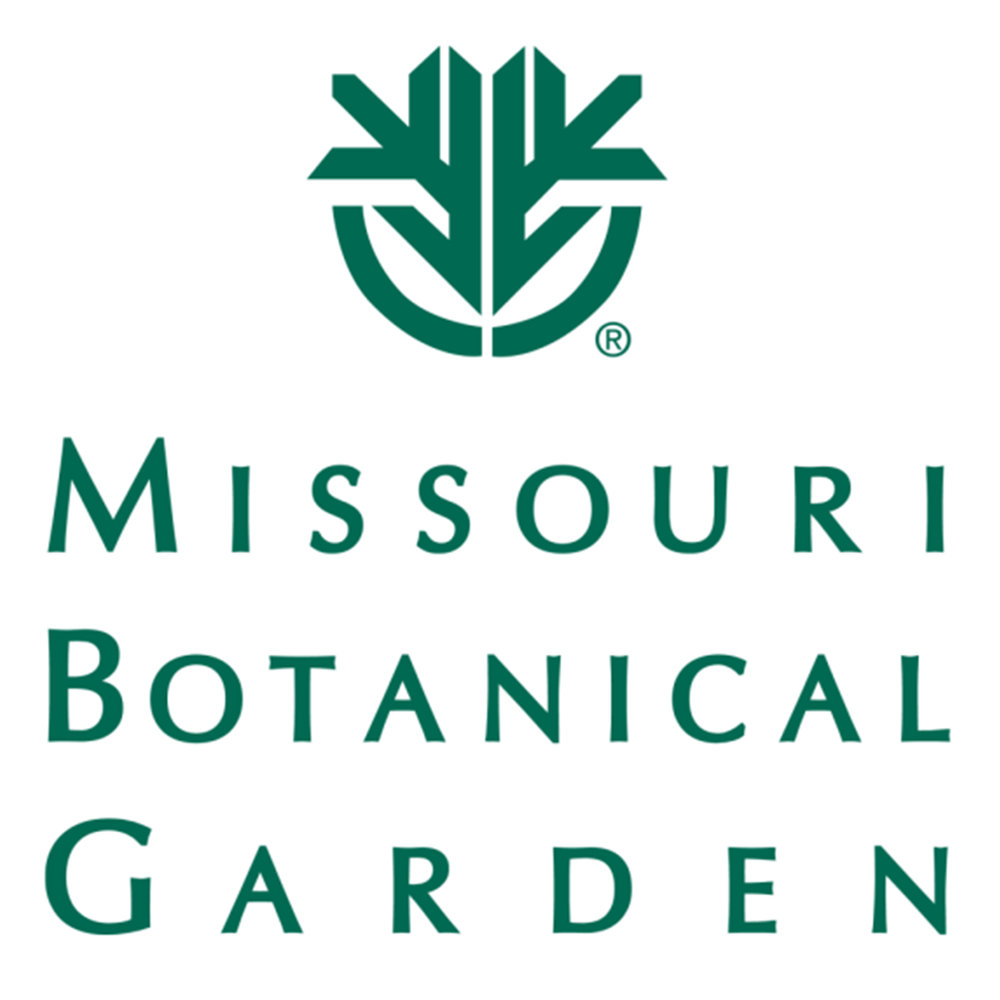 |
|
|
|
.
 Wildlife Tag
Wildlife Tag
